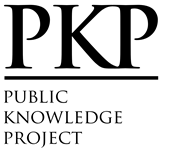CULTURAL COMPONENTS IN THE SEMANTICS OF KINSHIP TERMS IN RUSSIAN AND VIETNAMESE CULTURES
DOI:
https://doi.org/10.56844/tckhnn.59.34Keywords:
Russian language, Vietnamese language, linguaculture, seme, sphere of concepts, concept, kinship, component analysis, semantic featureAbstract
The article examines the kinship terminology presented through the comparison of Russian and Vietnamese lingua-cultural aspects to identify their functional features, amount and structures. In modern linguistics, the issue of lexical units having the same “kinship” seme in the Russian and Vietnamese languages is relatively under-researched. To contrast the kinship terminologies, the authors use the following methods: comparison, synchronic linguistic analysis and classification of research materials, comparative-typological investigation, component analysis and linguocultural analysis. The research finds that the Vietnamese language has more terms of kinship than the Russian language. Moreover, the semantic features referring to “age in one generation” and “paternal or maternal kinship” play the most important role in Vietnamese linguistic culture. Both cultures are characterized by respect to hierarchy and androcentrism. A lot of semes rarely used in Russian language are typical of Vietnamese language.






